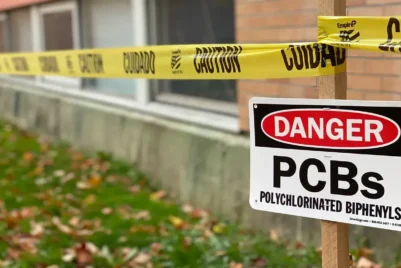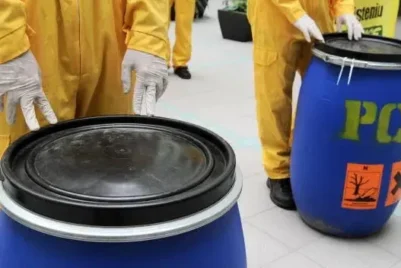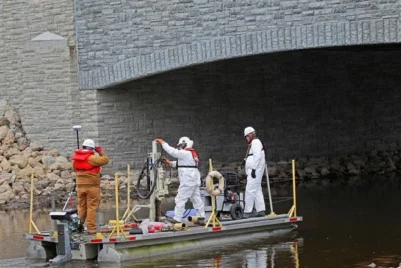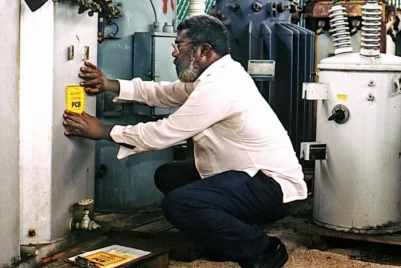In recent years the awareness of PCB exposure’s health-related concerns has been on the rise. With the increase in awareness and testing, we see that a large majority of affected structures are office buildings, and schools where the most vulnerable are exposed to toxic chemicals that can cause lifelong health concerns. McEldrew Purtell is at the forefront of monitoring nationwide lawsuits and examining claims from both the public and private sector.
PCB Resource Library
With our relentless dedication to educating and supporting vulnerable communities we have compiled a robust and regularly updated resource library to help you follow ongoing cases, testing information, specific areas of exposure, and how to take action in your own community.
Our Expertise
PCB General Information
- What are PCBs?
- Where are PCBs Found
- When to Consult with an Experienced Toxic Exposure Lawyer
- Who is Responsible for PCB Exposure
- Health Effects of PCB Exposure
- How You Become Exposed to PCBs
What Are PCBs?
PCBs or Polychlorinated biphenyls were considered one of the most important organic industrial compounds in existence. PCBs were very widely used in building construction and remodeling up until 1980, due to the nature of their insulating and nonflammable properties.
PCBs are man-made organic chemicals known as chlorinated hydrocarbons. They’re composed of carbon, chlorine, and hydrogen, which once degraded can cause serious, lasting, and life-threatening health problems.
The presence of PCBs can be hard to detect without proper, professional testing. They have no taste or smell, are non-flammable and chemically stable, possess good electrical insulation, and have a high boiling point.
Despite their prevalent uses spanning nearly 50 years, these man-made compounds are highly toxic, often leaching into the soil and water sources in surrounding areas.
Who is Responsible for PCBs
As the sole manufacturer of polychlorinated biphenyls (PCBs) for decades, Monsanto and its parent company Bayer now face numerous lawsuits over the toxic effects these substances have had on humans, wildlife, and the environment.
Despite being the exclusive manufacturer of PCB until 1977, Monsanto and its parent company Bayer have vowed to mount a vigorous defense against most claims.
McEldrew Purtell is monitoring these nationwide Monsanto PCB lawsuits and evaluating claims from both individuals and municipalities for potential future litigation. Because of their prevalence, you and your family may have been exposed to Monsanto products containing PCB.
Where are PCBs Found
While products containing PCBs are no longer legally sold in the stores, you can still find many of them in existing structures that used materials containing PCBs either at the time of construction or in later remodels. Listed below are potential types of manufactured PCB products:
- Paint, varnishes, and lacquers
- Non-conducting materials in electrical cables (e.g., plastic and rubber)
- Rubber and felt gaskets
- Coal-tar enamel coatings (e.g., pipe coating) and rust inhibitor coatings
- Insulation materials (e.g., fiberglass, felt, foam, and cork)
- Adhesives and tapes
- Caulk, grout, and joint material (e.g., putty, silicon, and bitumen)
- Pipe hangers
- Plastic applications, including vinyl and PVC
- Galbestos siding
- Mastics
- Acoustic ceiling and floor tiles
- Asphalt roofing and tar paper
- Synthetic resins and floor varnish
- Sprayed-on fireproofing
Because of their properties, PCBs manufactured by Monsanto were distributed to other manufacturers like GE and Westinghouse for use in other products.
These include but are not limited to:
- Fluorescent light fixtures and ballast
- Electrical capacitors and transformers
- Industrial coolants and lubricants
- Paints and caulking
When materials containing PCBs degrade their contamination is hard to detect, fast-spreading and difficult to contain. The toxins can contaminate surrounding water sources, soil, and are also airborne.
Health Effects From PCB Exposure
PCBs were banned by Congress in 1978 partly due to the growing body of scientific evidence that identified adverse health effects on humans and animals from long-term exposure to PCBs.
In the 1970s, Monsanto and others began noting some of the symptoms of PCB exposure, which can include:
- Nausea, vomiting, and abdominal pain
- Respiratory irritation, chronic cough
- Skin irritation, rashes, redness, and chloracne
- Weight loss
- Vision problems
- Jaundice and uroporphyria
- Suppressed immune responses
- Infertility
- Hypertension/strokes
In 2016, the International Agency for Research on Cancer found sufficient evidence that PCBs are carcinogenic in humans, causing melanoma and having strong positive associations with nonHodgkin’s lymphoma and breast cancer. Additionally, both animal and human studies show associations between exposure to PCBs and cancers including prostate, testicular, pancreatic, lung, and mouth in addition to nervous system problems.
How You Become Exposed to PCBs
Monsanto manufactured over two hundred varieties of PCB chemicals that were sold to other manufacturers. Third-party manufacturers incorporated PCBs into industrial and consumer products.
During the decades when Monsanto was manufacturing PCBs, millions of pounds were distributed every year. Even electric appliances like television sets and refrigerators manufactured as late as the 1970s included components made with Monsanto’s PCBs. About 1.5 billion pounds of PCB chemicals were thought to have been made in total.
Rural communities were often directly exposed at a higher level as the use of PCB products became the preferred method to reduce dust on dirt roads. They were regularly sprayed as a means for lasting, cost-effective road maintenance.
When used in building applications, during construction and renovation PCBs are compromised, degrade and become airborne. During the time of PCB prevenlace an estimate of over 10,000 schools were constructed nationwide. Schoolchildren who both presently and formerly attended schools built or renovated during this era have been exposed to PCBs at levels considered unsafe by the U.S. Environmental Protection Agency (EPA).
PCB contamination and environmental exposures occurred due to accidental leaks and spills in its liquid form (caulking, sealants, paint, etc) causing contamination in the soil and groundwater. Improper disposal of PCB products in any form into landfills or dumpsites also contribute to both direct and widespread contamination.
Today the environmental impact can be reduced with proper identification and disposal by licensed PCB experts. Do not attempt to remove suspected PCB contaminants yourself.
When to Consult with an Experienced Toxic Exposure Attorney
Navigating the complexities of PCB exposure should be left to experienced, professional legal counsel. McEldrew Purtell specializes in getting clients the best results.
If you, a loved one, or a client are a victim of PCB exposure, fill out our form or call us directly at (866) 283-7804 to speak to our Rapid Response Team.
We offer both co-counsel and referral services and are fully committed to helping victims recover their losses.



